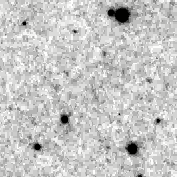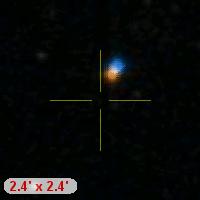Energy phantoms

Students start from specific situations of motion, determine how to calculate energy and convert units, then evaluate types of energy.
Energies
[edit | edit source]Def. a quantity that denotes the ability to do work and is measured in a unit dimensioned in mass × distance²/time² (ML²/T²) or the equivalent is called energy.
Def. a physical quantity that denotes ability to push, pull, twist or accelerate a body which is measured in a unit dimensioned in mass × distance/time² (ML/T²): SI: newton (N); CGS: dyne (dyn) is called force.
In astronomy we estimate distances and times when and where possible to obtain forces and energy.
The key values to determine in both force and energy are (L/T²) and (L²/T²). Force (F) x distance (L) = energy (E), L/T² x L = L²/T². Force and energy are related to distance and time using proportionality constants.
Every point mass attracts every single other point mass by a force pointing along the line intersecting both points. The force is proportional to the product of the two masses and inversely proportional to the square of the distance between them:[1] - ,
where:
- F is the force between the masses,
- G is the gravitational constant,
- m1 is the first mass,
- m2 is the second mass, and
- r is the distance between the centers of the masses.

The diagram shows two masses attracting one another. Credit: Dna-Dennis.{{free media}}
In the International System of Units (SI) units, F is measured in newtons (N), m1 and m2 in kilograms (kg), r in meters (m), and the constant G is approximately equal to 6.674×10−11
N m2 kg−2.[2]
Observationally, we may not know the origin of the force.
Coulomb's law states that the electrostatic force experienced by a charge, at position , in the vicinity of another charge, at position , in vacuum is equal to:
where is the electric constant and is the distance between the two charges.
Coulomb's constant is
where the constant is called the permittivity of free space in SI units of C2 m−2 N−1.
For reality, is the relative (dimensionless) permittivity of the substance in which the charges may exist.
The energy for this system is
where is the displacement.
Unknown forces
[edit | edit source]Newton's second law of motion is that , where is the force applied, is the mass of the object receiving the force, and is the acceleration observed for the astronomical object. The newton is therefore:[3]
where:
- N: newton
- kg: kilogram
- m: metre
- s: second.
In dimensional analysis:
where
- M: mass
- L: length
- T: time.
But, for a force of unknown type, mass or charge may be meaningless until proven applicable.
So that
and
where may be called an energy phantom, or astronomical energy phantom.
Problem 1
[edit | edit source]

In the image at right Van Maanen's star (largest dark spot) is not at the center of the coordinates where expected, but as a high proper motion star it is actually off-center to the center top right. This is an example of the change in radiation flux to a specific location of observation by a source undergoing a change in location for observation (but staying within the observation field of view) within an observable change in radiation flux (the star did not move close enough to blacken the entire frame nor change intensity sufficiently to disappear into the background of the detector).
Using a meter stick or smaller measuring device, measure the distance in mm that the star is displaced from the center of the negative. The image is 5' x 5' and may be considered from May 1.0, 1994.
According to SIMBAD, Van Maanen's star (designated VAN MAANEN STAR), is at optical coordinates: 00h 49m 09.902s +05° 23' 19.01".[4]
a. If the SIMBAD coordinates for the center of the image are the star's current position, how many milliarcseconds (mas) has the star moved since the above image was taken?
b. If the only direction of motion for the star is in the plane of the image, and the star is 14.1 ± 0.1 ly away, how fast is it moving?
c. The image at SIMBAD for the star at left, also called Gliese 35, shows a split color image of the star (assume the position of the star is between the two color spots), where the image is 2.4' x 2.4'. The star is not at the coordinates but along the line of travel. If the star slowed down between these two images, what is its speed in the SIMBAD image?
d. Using the two speeds from above, calculate the deceleration, or acceleration, the star may have experienced.
Problem 2
[edit | edit source]In Problem 1, let the acceleration you've calculated be applied at the same magnitude over the entire time from the star's initial position to its position in the visual image at left. What is the value of the energy phantom for Van Maanen's star?
Problem 3
[edit | edit source]If the sole influence on Van Maanen's star is another star at the Sun's distance and mass, directly behind Van Maanen's star in the plane of the image, what is the force of gravity applied by this star to Van Maanen's star at its initial position in the image? Let the mass of Van Maanen's star be 0.68 ± 0.02 Mʘ.
Is this gravitational force enough to account for the deceleration?
Problem 4
[edit | edit source]If the sole influence on Van Maanen's star is another star at the Sun's distance directly in front of Van Maanen's star in the plane of the image, what is the force of electrostatics applied by this star to Van Maanen's star at its initial position in the image? Let the charge of the star be QS = -0.3 x 1028 e.s.u. and the amount of charge on Van Maanen's star be 0.68 ± 0.02 QS.
Is this electrostatic force enough to account for the deceleration?
Which is stronger, the gravitational force or the electrostatic force?
Problem 5
[edit | edit source]How much closer would the star have to be to produce the deceleration of Van Maanen's star for each force?
Hypotheses
[edit | edit source]- In astronomy observations usually consist of detection of radiation followed by analysis which usually includes assumptions about the forces and fields observed.
- The four known forces or interactions all stem from an electromagnetic type source that manifests itself at varying intensities depending on the collection of particles.
See also
[edit | edit source]References
[edit | edit source]- ↑ - Proposition 75, Theorem 35: p.956 - I.Bernard Cohen and Anne Whitman, translators: Isaac Newton, The Principia: Mathematical Principles of Natural Philosophy. Preceded by A Guide to Newton's Principia, by I. Bernard Cohen. University of California Press 1999 ISBN 0-520-08816-6 ISBN 0-520-08817-4
- ↑ "CODATA2006".
- ↑ Table 3. Coherent derived units in the SI with special names and symbols, In: The International System of Units (SI). International Bureau of Weights and Measures. 2006. http://www.bipm.org/en/si/si_brochure/chapter2/2-2/table3.html.
- ↑ F. Van Leeuwen (November 1, 2007). "Validation of the new Hipparcos reduction". Astronomy & Astrophysics 474 (2): 653-64. doi:10.1051/0004-6361:20078357. http://adsabs.harvard.edu/abs/2007A%26A...474..653V. Retrieved 2013-12-05.
External links
[edit | edit source]- International Astronomical Union
- NASA/IPAC Extragalactic Database - NED
- NASA's National Space Science Data Center
- Office of Scientific & Technical Information
- The SAO/NASA Astrophysics Data System
- Scirus for scientific information only advanced search
- SDSS Quick Look tool: SkyServer
- SIMBAD Astronomical Database
- SIMBAD Web interface, Harvard alternate
- Spacecraft Query at NASA.
- Universal coordinate converter
{{Flight resouces}}{{Principles of radiation astronomy}}{{Radiation astronomy resources}}{{Repellor vehicle}}{{Technology resources}}

























